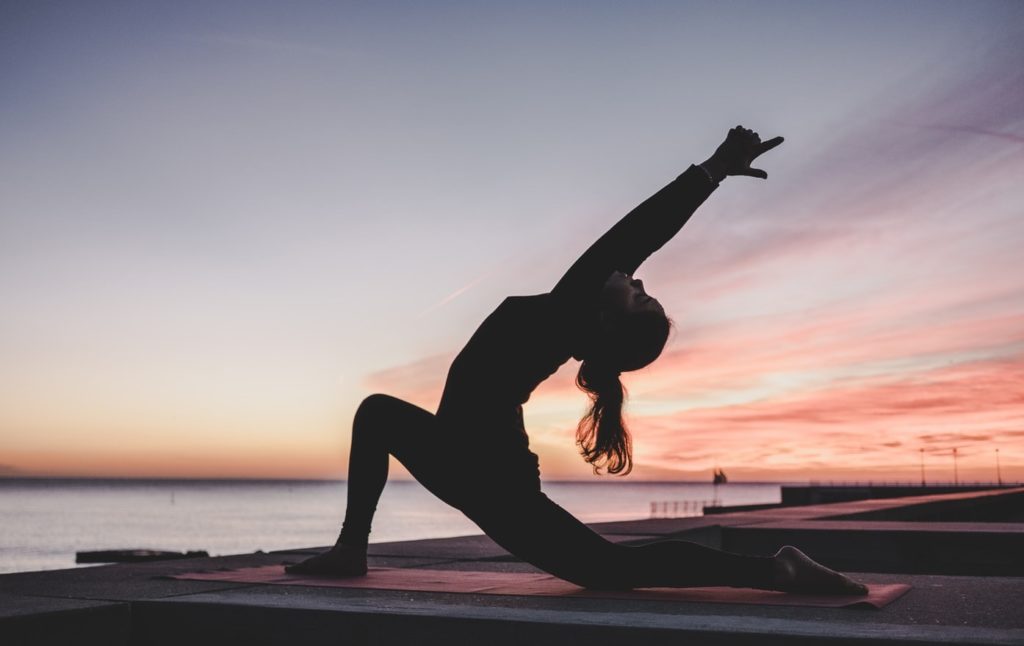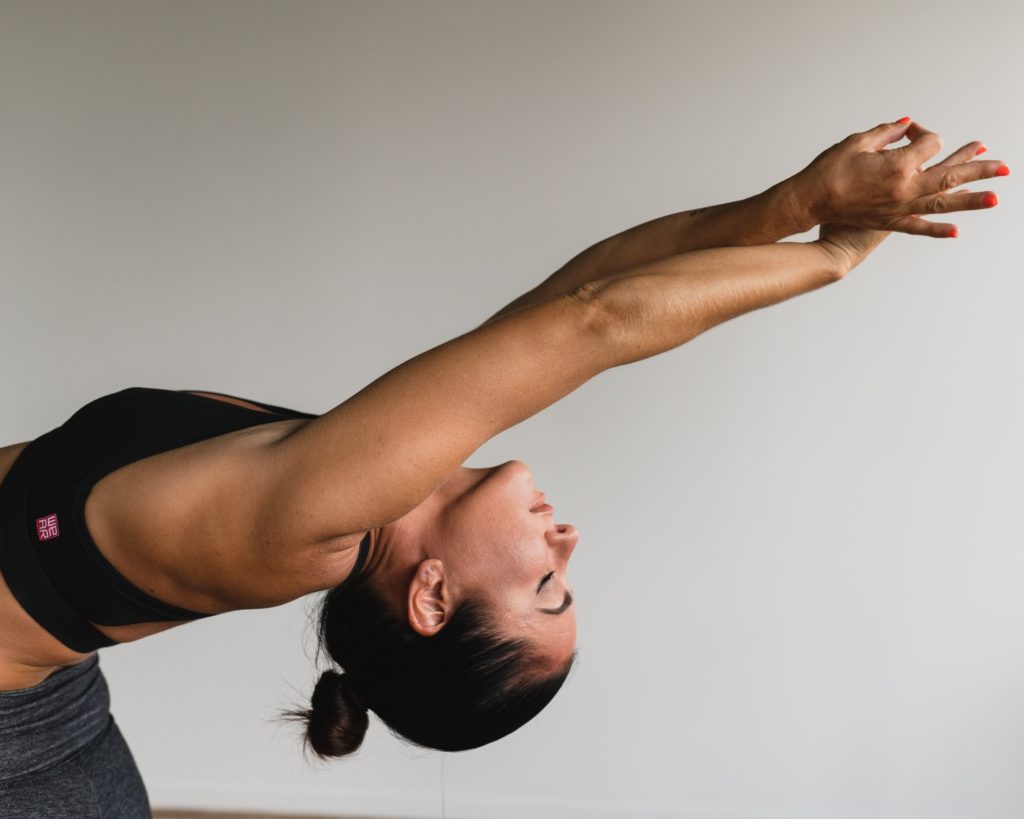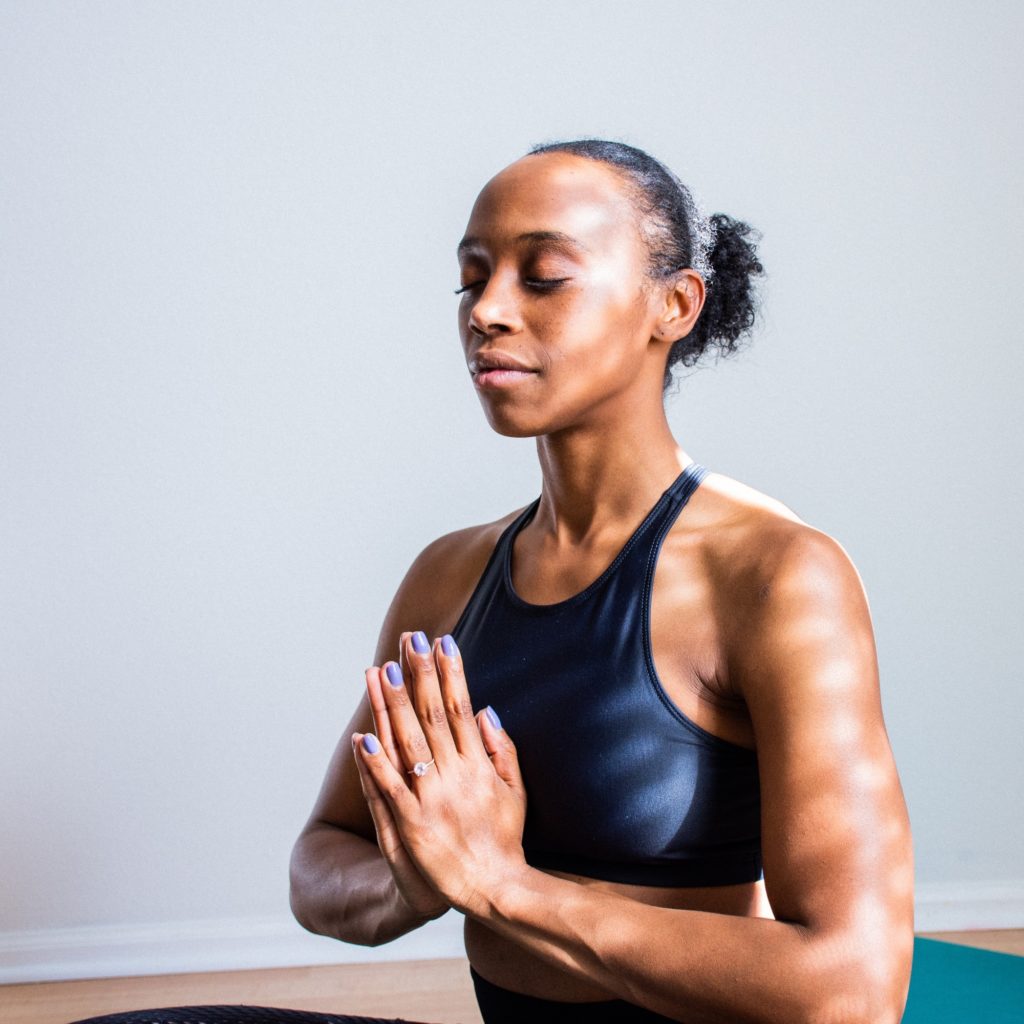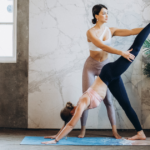Yoga instructors work with their students on the adoption and alignment of specific body postures, breath control and meditation in this ancient Hindu discipline practiced worldwide for health and relaxation.
Yoga instructors use their class time to practice themselves, performing the asanas (body postures) on their yoga mats as a demonstration for students to follow.

There is a difference between a yoga instructor and a yoga teacher. A yoga instructor leads group classes through various levels and types of yoga practice. This includes demonstrating various poses and guiding students into position, working on flexibility, doing administrative work for the class, getting equipment ready for each class and learning what participants want from their yoga experience.
A yoga teacher trains students who want to become yoga teachers.
We’re going to focus on yoga instructors in this article.
As a yoga instructor, you’ll use your body to demonstrate the correct way to get into poses, the most helpful breathing patterns, and tips for achieving spiritual wellness that leads to greater health and serenity. You’ll also interact directly with students, gently adjusting their bodies to reach the correct pose, provide less experienced students with alternative poses and help all members of the class with their fitness goals. Planning classes that align with the abilities of students is an important part of the job.
Physical fitness and yoga knowledge are absolute requirements for this role. Classes typically last from an hour to 90 minutes, so everyone gets a workout. You’ve got to be in good shape to demonstrate good yoga technique if you plan to offer instruction at advanced levels. The more you’ve mastered, the more valuable you will be to your students.

Great communication skills are also essential. A yoga instructor must be able to explain clearly how to move the body and what this movement should feel like.
Motivational skill is likewise important. Yoga can be physically and mentally challenging, so you must be able to push, encourage and praise your students as they reach their goals.
Read on to discover how you can become a yoga instructor, helping students achieve inner peace and enjoy greater health as a result of your teachings.
In this article you’ll learn:
- How much money you can make as a yoga instructor
- The required training and certifications
- Professional groups to join
- Employment opportunities for yoga instructors
- Finding clients
- Plus helpful tips
How much money can you make?
The average annual wage for fitness trainers and instructors, including yoga teachers, was $40,390, according to the US Bureau of Labor Statistics. Employment of yoga instructors is projected to grow 13 percent through 2028, the bureau reports. That’s much faster than the national average for all occupations. If you offer your own private classes, operating as an independent business owner, over time you stand to make much more money than the national average. This is because you get to decide how much you want to work, how much you will charge for classes and whether you want to specialize in certain practices such as hot yoga, for which you can charge more.

Training and Certification
There are no state or national licensing requirements for yoga instructors. However, most gyms and yoga studios require that you have a certification to teach there. For some gyms and studios, a certification may be the only credential you’ll need. Some facilities require that you be registered with the Yoga Alliance or have graduated from Yoga Alliance-approved training.
Becoming a yoga instructor definitely requires experience, which you can receive through a yoga teacher training program. Instructors receive credentials based on how many hours of teaching experience they have, and whether they’ve learned a specialty, like hot yoga or yoga for children.
Some employers want broadly skilled fitness instructors who can teach yoga as well as cycling, Pilates or other classes, and may prefer to hire a certified fitness instructor with yoga experience. Because of this employment trend, you may want to diversify your skill set. PocketSuite offers deep resources in other exercise disciplines for you to learn about.
Here’s an extensive listing of yoga training schools you can review to find an education program best suited to your needs.

What you’ll learn in training:
- A deeper understanding of poses and how they work together to produce the total yoga experience.
- Yoga anatomy, alignment and key modifications, including hands-on adjustments.
- Develop your leadership abilities to guide a class with confidence.
- Broaden your understanding of yoga beyond physical poses by studying pranayama (breath control), meditation, chakras (energy centers in the body), and energy anatomy (where these chakras can be found).
- Yoga philosophy and the history of yoga, including the science at the heart of these powerful poses and mental disciplines.
- Living your best life through the benefits of yoga, and how to share those benefits with students.
- How to teach yoga. There is a unique process to yoga instruction, which includes speaking deliberately and from the heart to achieve clarity and understanding.
- Making course-corrections. In sailing a boat, it is often necessary to change direction so your navigation takes you to where you want to be. Similarly, being open in the mind to accept the need for change must be followed by the ability, the will, to change.
Professional Groups to Join
The Yoga Alliance is the premiere organization devoted to yoga instructors. Members agree to abide by a code of ethical conduct and observe best practices in the teaching of yoga. Joining the alliance demonstrates dedication to your career and enhances your credibility among new students looking to enroll in a class. The initial registration cost is $115, including the application fee. After that, annual dues are $65.

Employment
Gyms, public recreation centers, the YMCA – all may offer yoga classes (or would like to) in your area.
You’ll need photocopies of your résumé, training certifications and perhaps a photo of yourself demonstrating a yoga pose. This personalizes your application package.
If you mail these materials, always follow up with a phone call to keep your name on their minds.
Be sure to check online resources such as ZipRecruiter and Indeed.com, where a simple Internet search can often turn up dozens of job openings.
Finding Clients
Planning to offer private yoga classes? Business cards and a basic website should be the core of your marketing toolkit as a yoga instructor. The website need not be fancy or expensive, just attractively designed, with photos of your classes in session (get permission from any students who are visibly recognizable). The website must also include your business location and contact information at the top of every page.
In addition to your business website, the next thing to do is create an Instagram account to showcase your yoga practice. Instagram is the #1 online venue for creative professionals to promote themselves. It’s a free marketing tool that’s always working on your behalf.
Next, set up a Facebook page for your yoga practice so that people searching for yoga instruction can find you. This, too, is a free service that can benefit your business by putting you front-and-center of potentially thousands of students.
Other strategies for attracting new business:
- Create a referral program with discounts for returning yoga students who bring new clients to you.
- Ask students to review your classes online. According to a recent survey, 90% of people say their buying decisions are influenced by positive online reviews.

Good to know:
7 tips to Help New Yoga Teachers.
Be authentic
Always be your true self, the person who practices yoga because it makes you feel alive and brightens the surrounding world. Plus, students will quickly recognize instructors who “keep it real” and motivate with their passion for yoga.
Plan classes thoughtfully
Each class should be thought out by identifying the goals for the session, while building in time for breathing and meditation, in addition to work on poses. Each class should build on the previous session so there is a forward momentum to your instruction. Be sure you have everything you need before going to class – yoga mat, music and a device for playing the music, chimes, a soft-toned bell – everything you would require.
Be on time
Always get to class before your students to set up and be prepared to start on time. This is a powerful demonstration that you are in control of your own life.
Play music during class
You can use a music streaming service or build a playlist of soothing music on your smartphone. Invest in a decent, portable Bluetooth speaker so you can play your music at a volume the class can hear. The phone’s built-in speaker is usually terrible for listening to music.

Don’t be too serious
Life is about pursuing happiness and enjoying the sensation of being alive. Be able to laugh at yourself if you make a mistake in class – even if you fall out of a pose onto your mat. It is nothing more than a reminder of our common humanity. Students will love you for it.
Dress to impress
Invest in your yoga wardrobe by selecting clothes that reflect your personal style yet are also functional and durable. Yes, students come to class to learn yoga, but they also pick up nonverbal cues such as how instructors present themselves. Be sure to present the image you want to project.
Build a rapport with students
Learn everyone’s name. Try to learn what you can about their lives outside of yoga class. People respond favorably to people who show a genuine interest in them. This can pay off with exponential benefits. Students see that you care and are interested. They tell others about their positive experience in yoga class. Their friends become intrigued and sign up for one of your classes. Before you know it, you’ve maxed out on the number of students you can teach. Not a bad problem to have.
If you enjoyed this article, check out some more great PocketSuite.io content that can help you grow your career as a yoga instructor. Here’s a great place to start.PocketSuite has thousands of business owners who all started where you are right now. Our community is always happy to help you ramp up, grow your client base, and achieve your income goals, both within the PocketSuite app and as part of our exclusive Facebook Community Group. PocketSuite’s vision is for any professional to be able to work for themselves and make a great living. It starts here. It starts with you. It starts today. Let’s get started, download PocketSuite now! Feel free to reach out with any questions (we’d love to hear from you)! Text us @ (415) 841-2300.





